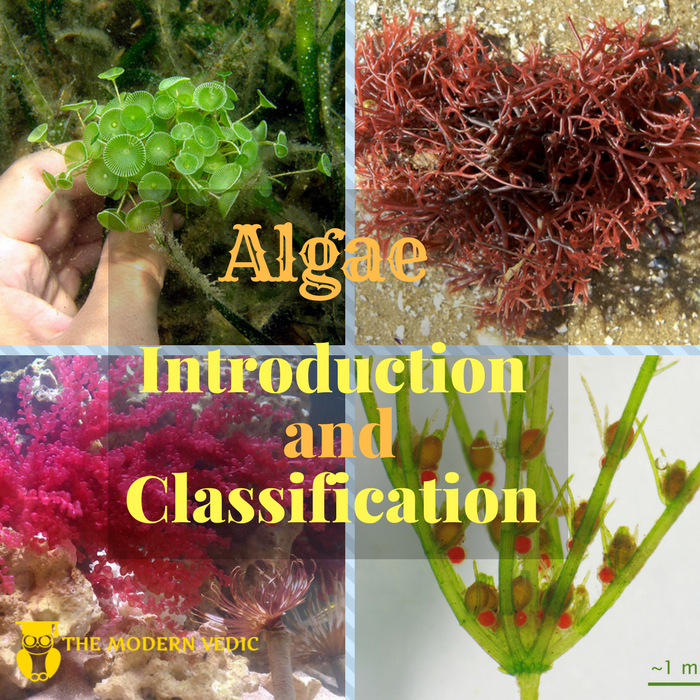Types Of Algae – General Science Notes – For W.B.C.S. Examination.
শৈবালের প্রকার – সাধারণ বিজ্ঞান নোট – WBCS পরীক্ষা।
The algae are divided into three main classes.Continue Reading Types Of Algae – General Science Notes – For W.B.C.S. Examination.
Chlorophyceae, Phaeophyceae and Rhodophyceae.
Chlorophyceae
The members of chlorophyceae are commonly called green algae. The
plant body may be unicellular, colonial or filamentous. They are usually
grass green due to the dominance of pigments chlorophyll a and b. The
pigments are localised in definite chloroplasts. The chloroplasts may be
discoid, plate-like, reticulate, cup-shaped, spiral or ribbon-shaped in
different species. Most of the members have one or more storage bodies
called pyrenoids located in the chloroplasts. Pyrenoids contain protein
besides starch. Some algae may store food in the form of oil droplets.
Green algae usually have a rigid cell wall made of an inner layer of celluloseand an outer layer of pectose.
Vegetative reproduction usually takes place by fragmentation or by
formation of different types of spores. Asexual reproduction is by
flagellated zoospores produced in zoosporangia. The sexual reproduction
shows considerable variation in the type and formation of sex cells and it
may be isogamous, anisogamous or oogamous. Some commonly found
green algae are: Chlamydomonas, Volvox, Ulothrix, Spirogyra and Chara.
Phaeophyceae
The members of phaeophyceae or brown algae are found primarily in
marine habitats. They show great variation in size and form. They range
from simple branched, filamentous forms (Ectocarpus) to profusely
branched forms as represented by kelps, which may reach a height of
100 metres. They possess chlorophyll a, c, carotenoids and xanthophylls.
They vary in colour from olive green to various shades of brown depending
upon the amount of the xanthophyll pigment, fucoxanthin present inthem. Food is stored as complex carbohydrates, which may be in the
form of laminarin or mannitol. The vegetative cells have a cellulosic wall
usually covered on the outside by a gelatinous coating of algin. The
protoplast contains, in addition to plastids, a centrally located vacuole
and nucleus. The plant body is usually attached to the substratum by a
holdfast, and has a stalk, the stipe and leaf like photosynthetic organ –
the frond. Vegetative reproduction takes place by fragmentation. Asexual
reproduction in most brown algae is by biflagellate zoospores that are
pear-shaped and have two unequal laterally attached flagella.
Sexual reproduction may be isogamous, anisogamous or oogamous.
Union of gametes may take place in water or within the oogonium
(oogamous species). The gametes are pyriform (pear-shaped) and bear
two laterally attached flagella. The common forms are Ectocarpus, Dictyota,
Laminaria, Sargassum and Fucus.
Rhodophyceae
The members of rhodophyceae are commonly called red algae because of
the predominance of the red pigment, r-phycoerythrin in their body. Majority of the red algae are marine with greater concentrations found in the warmer areas. They occur in both well-lighted regions close to the surface of water and also at great depths in oceans where relatively little light penetrates.
The red thalli of most of the red algae are multicellular. Some of them
have complex body organisation. The food is stored as floridean starch
which is very similar to amylopectin and glycogen in structure.
The red algae usually reproduce vegetatively by fragmentation. They
reproduce asexually by non-motile spores and sexually by non-motile.
For Guidance of WBCS (Exe.) Etc. Preliminary , Main Exam and Interview, Study Mat, Mock Test, Guided by WBCS Gr A Officers , Online and Classroom, Call 9674493673, or mail us at – mailus@wbcsmadeeasy.in
Visit our you tube channel WBCSMadeEasy™ You tube Channel
Please subscribe here to get all future updates on this post/page/category/website



 +919674493673
+919674493673  mailus@wbcsmadeeasy.in
mailus@wbcsmadeeasy.in






































































































